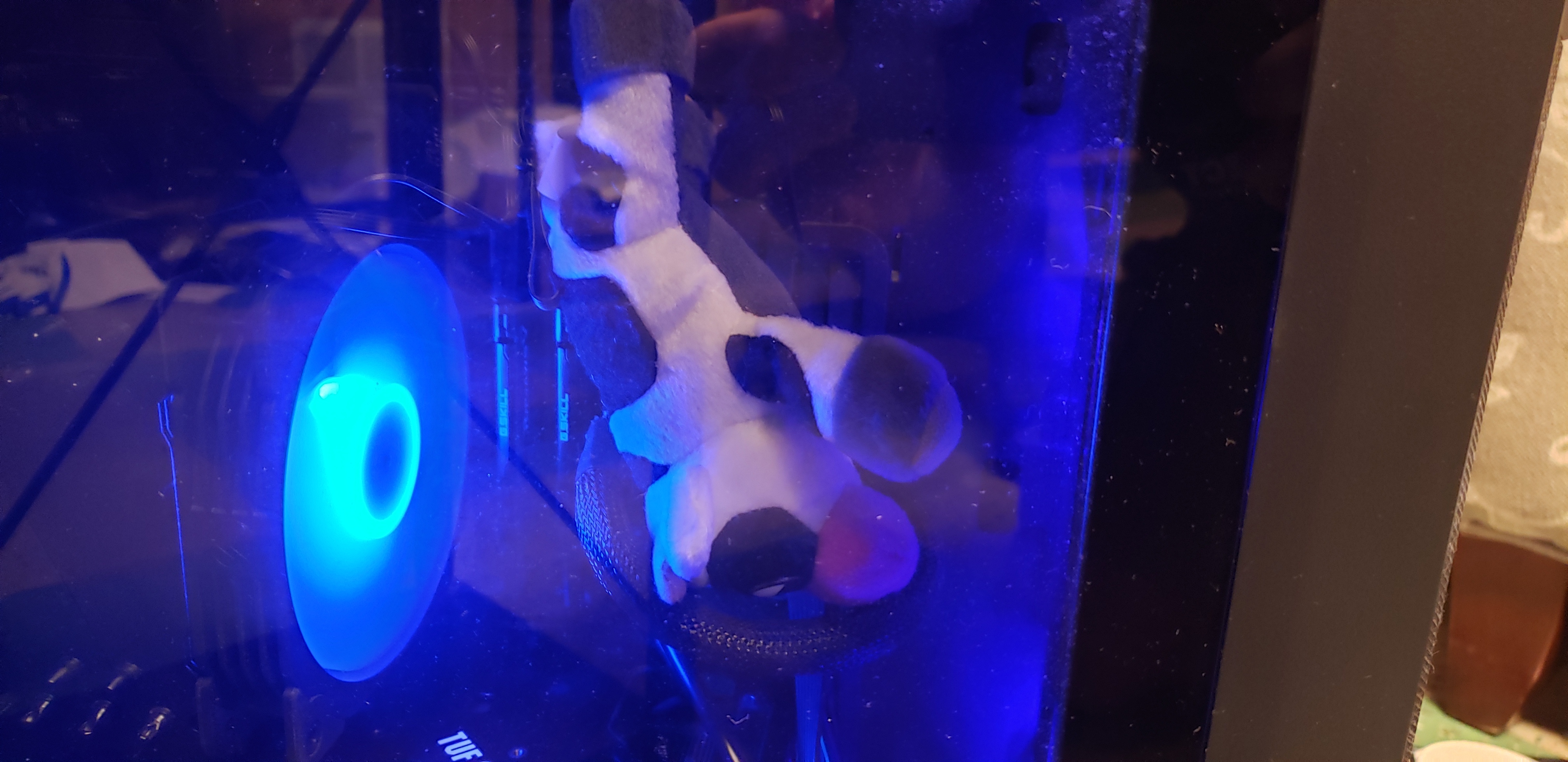About a year ago I switched to ZFS for Proxmox so that I wouldn’t be running technology preview.
Btrfs gave me no issues for years and I even replaced a dying disk with no issues. I use raid 1 for my Proxmox machines. Anyway I moved to ZFS and it has been a less that ideal experience. The separate kernel modules mean that I can’t downgrade the kernel plus the performance on my hardware is abysmal. I get only like 50-100mb/s vs the several hundred I would get with btrfs.
Any reason I shouldn’t go back to btrfs? There seems to be a community fear of btrfs eating data or having unexplainable errors. That is sad to hear as btrfs has had lots of time to mature in the last 8 years. I would never have considered it 5-6 years ago but now it seems like a solid choice.
Anyone else pondering or using btrfs? It seems like a solid choice.
My setup is different to yours but not totally different. I run ESXi 8, and I started to use BTRFS on some of my VM’s.
I had a power failure, that was longer than the UPS could handle. Most of the system shutdown safely, a few VM’s did not. All of the EXT4 VM’s were easily recovered (including another one that was XFS). TWO of the BTRFS systems crashed into a non recoverable state.
Nothing I could do to fix them, they were just toast. I had no choice but to recover using backups. This made me highly aware that BTRFS is still not a reliable FS.
I am migrating everything from BTRFS to something more stable and reliable like EXT4. It’s simply not worth the headache.
When did this happen?
It was only a few weeks ago (maybe 4). Systems are all kept up to date with ansible. Most are Debian but there are few Ubuntu. The two that failed were both Debian.
Granted both that failed have high [virtual] disk usage compared to the other VM’s. I cannot remember the failure now, but lots of searching confirmed that it was likely unrecoverable (they could boot, but only into read only). None of the btrfs-check “dangerous” commands could recover it, spitting out tons of errors about mismatching somethings (again, forgotten the error).
What kind of disks, and how is your ZFS set up? Something seems amis here.
Don’t use btrfs if you need RAID 5 or 6.
The RAID56 feature provides striping and parity over several devices, same as the traditional RAID5/6. There are some implementation and design deficiencies that make it unreliable for some corner cases and the feature should not be used in production, only for evaluation or testing. The power failure safety for metadata with RAID56 is not 100%.
https://btrfs.readthedocs.io/en/latest/btrfs-man5.html#raid56-status-and-recommended-practices
I have no problem running it with raid 5/6. The important thing is to have a UPS.
Or run the raid 5 or 6 separately, with hardware raid or mdadm
Even for simple mirroring there’s an argument to be made for running it separately from btrfs using mdadm. You do lose the benefit of btrfs being able to automatically pick the valid copy on localised corruption, but the admin tools are easier to use and more proven in a case of full disk failure, and if you run an encrypted block device you need to encrypt half as much stuff.
I’ve got raid 6 at the base level and LVM for partitioning and ext4 filesystem for a k8s setup. Based on this, btrfs doesn’t provide me with any advantages that I don’t already have at a lower level.
Additionaly, for my system, btrfs uses more bits per file or something such that I was running out of disk space vs ext4. Yeah, I can go buy more disks, but I like to think that I’m running at peak efficiency, using all the bits, with no waste.
btrfs doesn’t provide me with any advantages that I don’t already have at a lower level.
Well yeah, because it’s supposed to replace those lower levels.
Also, BTRFS does provide advantages over ext4, such as snapshots, which I think are fantastic since I can recover if things go sideways. I don’t know what your use-case is, so I don’t know if the features BTRFS provides would be valuable to you.
Generally, if a lower level can do a thing, I prefer to have the lower level do it. It’s not really a reason, just a rule of thumb. I like to think that the lower level is more efficient to do the thing.
I use LVM snapshots to do my backups. I don’t have any other reason for it.
That all being said, I’m using btrfs on one system and if I really like it, I may migrate to it. It does seem a whole lot simpler to have one thing to learn than all the layers.
Actually, the lower level may likely be less efficient, due to being oblivious about the nature of the data.
For example, a traditional RAID1 mirror on creation immediately starts a rebuild across all the potential data capacity of the storage, without a single byte of actual data written. So you spend an entire drive wipe making “don’t care” bytes redundant.
Similarly, for snapshotting, it can only track dirty blocks. So you replace uninitialized data that means nothing with actual data, the snapshot layer is compelled to back up that unitiialized data, because it has no idea whether the blocks replaced were uninialized junk or real stuff.
There’s some mechanisms in theory and in practice to convey a bit of context to the block layer, but broadly speaking by virtue of being a mostly oblivious block level, you have to resort to the most naive and often inefficient approaches.
That said, block capacity is cheap, and doing things at the block level can be done in a ‘dumb’ way, which may be easier for an implementation to get right, versus a more clever approach with a bigger surface for mistakes.
Yup, I used to use LVM, but the two big NAS filesystems have a ton of nice features and they expect to control the disk management. I looked into BTRFS and ZFS, and since BTRFS is native to Linux (some of my SW doesn’t support BSD) and I don’t need anything other than RAID mirror, that’s what I picked.
I used LVM at work for simple RAID 0 systems where long term uptime was crucial and hardware swaps wouldn’t likely happen (these were treated like IOT devices), and snapshots weren’t important. It works well. But if you want extra features (file-level snapshots, compression, volume quotas, etc), BTRFS and ZFS make that way easier.
I am interested in compression. I may give it a try when I swap out my desktop system. I did try btrfs in it’s early, post alpha stage, but found that the support was not ready yet. I think I had a VM system that complained. It is older now and more mature and maybe it’s worth another look.
The question is how do you get a bad performance with ZFS?
I just tried to read a large file and it gave me uncached 280 MB/s from two mirrored HDDs.
The fourth run (obviously cached) gave me over 3.8 GB/s.
I have never heard of anyone getting those speeds without dedicated high end hardware
Also the write will always be your bottleneck.
I’m seeing very similar speeds on my two-HDD RAID1. The computer has an AMD 8500G CPU but the load from ZFS is minimal. Reading / writing a 50GB /dev/urandom file (larger than the cache) gives me:
- 169 MB/s write
- 254 MB/s read
What’s your setup?
Maybe I am CPU bottlenecked. I have a mix of i5-8500 and i7-6700k
The drives are a mix but I get almost the same performance across machines
It’s possible, but you should be able to see it quite easily. In my case, the CPU utilization was very low, so the same test should also not be CPU-bottlenecked on your system.
Is your machine part of a cluster by chance? Of so, when you do a VM transfer what performance do you see?
I have similar speeds on a truenas that I installed on a simple i3 8100
How much ram and what is the drive size?
I suspect this also could be an issue with SSDs. I have seen a lot a posts around describing similar performance on SSDs.
64 gb of ecc ram (48gb cache used by zfs) with 2tb drives (3 of them)
Yeah it sounds like I don’t have enough ram.
ZFS really likes RAM, so if you’re running anything less than 16GB, that could be your issue.
From the Proxmox documentation:
As a general rule of thumb, allocate at least 2 GiB Base + 1 GiB/TiB-Storage. For example, if you have a pool with 8 TiB of available storage space then you should use 10 GiB of memory for the ARC.
I changed the arc size on all my machines to 4GB and it runs a bit better. I am getting much better performance. I though I had changed it but I didn’t regenerate initramfs so it didn’t apply. I am still having issues with VM transfers locking up the cluster but that might be fixable by tweaking some settings.
16GB might be overkill or underkill depending on what you are doing.
This is an old PC (Intel i7 3770K) with 2 HDDs (16 TB) attached to onboard SATA3 controller, 16 GB RAM and 1 SSD (120 GB). Nothing special. And it’s quite busy because it’s my home server with a VM and containers.
A bit of topic; am I the only one that pronounces it “butterface”?
Similarly, I read bcachefs as BCA Chefs 😅
I call it butter fuss. Yours is better.
Ah feck. Not any more.
Related, and I cannot help but read “bcachefs” as “bitch café”
Isn’t it meant to be like “better FS”? So you’re not too far off.
i call it “butter FS”
Not anymore.
You son of a bitch, I’m in.
If it didn’t give you problems, go for it. I’ve run it for years and never had issues either.
Meh. I run proxmox and other boot drives on ext4, data drives on xfs. I don’t have any need for additional features in btrfs. Shrinking would be nice, so maybe someday I’ll use ext4 for data too.
I started with zfs instead of RAID, but I found I spent way too much time trying to manage RAM and tuning it, whereas I could just configure RAID 10 once and be done with it. The performance differences are insignificant, since most of the work it does happens in the background.
You can benchmark them if you care about performance. You can find plenty of discussion by googling “ext vs xfs vs btrfs” or whichever ones you’re considering. They haven’t changed that much in the past few years.
but I found I spent way too much time trying to manage RAM and tuning it,
I spent none, and it works fine. what was you’re issue?
I have four 6tb data drives and 32gb of RAM. When I set them up with zfs, it claimed quite a few gb of RAM for its cache. I tried allocating some of the other NVMe drive as cache, and tried to reduce RAM usage to reasonable levels, but like I said, I found that I was spending a lot of time fiddling instead of just configuring RAID and have it running just fine in much less time.
You can ignore the RAM usage, it’s just cache. It uses up to half your RAM by default but if other things need it zfs will just clear RAM for that to happen.
That might be what was supposed to happen, but when I started up the VMs I saw memory contention.
Proxmox only supports btrfs or ZFS
Or at least that’s what I thought
ext4 and others too.
For raid?
You could do it with mdadm
I am using btrfs on raid1 for a few years now and no major issue.
It’s a bit annoying that a system with a degraded raid doesn’t boot up without manual intervention though.
Also, not sure why but I recently broke a system installation on btrfs by taking out the drive and accessing it (and writing to it) from another PC via an USB adapter. But I guess that is not a common scenario.
Using it here. Love the flexibility and features.
For my jbod array, I use ext4 on gpt partitions. Fast efficient mature.
For anything else I use ext4 on lvm thinpools.
That doesn’t do error detection and correction nor does it have proper snapshots.
I’ve been using single-disk btrfs for my rootfs on every system for almost a decade. Great for snapshots while still being an in-tree driver. I also like being able to use subvolumes to treat / and /home (maybe others) similar to separate filesystems without actually being different partitions.
I had used it for my NAS array too, with btrfs raid1 (on top of luks), but migrated that over to ZFS a couple years ago because I wanted to get more usable storage space for the same money. btrfs raid5 is widely reported to be flawed and seemed to be in purgatory of never being fixed, so I moved to raidz1 instead.
One thing I miss is heterogenous arrays: with btrfs I can gradually upgrade my storage one disk at a time (without rewriting the filesystem) and it uses all of my space. For example, two 12TB drives, two 8TB drives, and one 4TB drive adds up to 44TB and raid1 cuts that in half to 22TB effective space. ZFS doesn’t do that. Before I could migrate to ZFS I had to commit to buying a bunch of new drives (5x12TB not counting the backup array) so that every drive is the same size and I felt confident it would be enough space to last me a long time since growing it after the fact is a burden.
With version 2.3 (currently in RC), ZFS will at least support RAIDZ expansion. That should already help a lot for a NAS usecase.
Btrfs Raid 10 reportedly is stable
Not proxmox-specific, but I’ve been using btrfs on my servers and laptops for the past 6 years with zero issues. The only times it’s bugged out is due to bad hardware, and having the filesystem shouting at me to make me aware of that was fantastic.
The only place I don’t use zfs is for my nas data drives (since I want raidz2, and btrfs raid5 is hella shady) but the nas rootfs is btrfs.
Do you rely on snapshotting and journaling? If so backup your snapshots.
Why?
I already take backups but I’m curious if you have had any serious issues
Are you backing up files from the FS or sre you backing up the snapshots? I had a corrupted journal from a power outage that borked my install. Could not get to the snapshots on boot. Booted into a live disk and recovered the snapshot that way. Would’ve taken hours to restore from a standard backup, however it was minutes restoring the snapshot.
If you’re not backing up BTRFS snapshots and just backing up files you’re better off just using ext4.
One day I had a power outage and I wasn’t able to mount the btrfs system disk anymore. I could mount it in another Linux but I wasn’t able to boot from it anymore. I was very pissed, lost a whole day of work
ACID go brrr
When did this happen?
I think 5 years ago, on Ubuntu
Did you set the correct block size for your disk? Especially modern SSDs like to pretend they have 512B sectors for some compatibility reason, while the hardware can only do 4k sectors. Make sure to set
ashift=12.Proxmox also uses a very small volblocksize by default. This mostly applies to RAIDz, but try using a higher value like 64k. (Default on Proxmox is 8k or 16k on newer versions)
https://discourse.practicalzfs.com/t/psa-raidz2-proxmox-efficiency-performance/1694
I’m thinking of bumping mine up to 128k since I do mostly photography and videography, but I’ve heard that 1M can increase write speeds but decrease read speeds?
I’ll have a RAIDZ1 and a RAIDZ2 pool for hot storage and warm storage.











